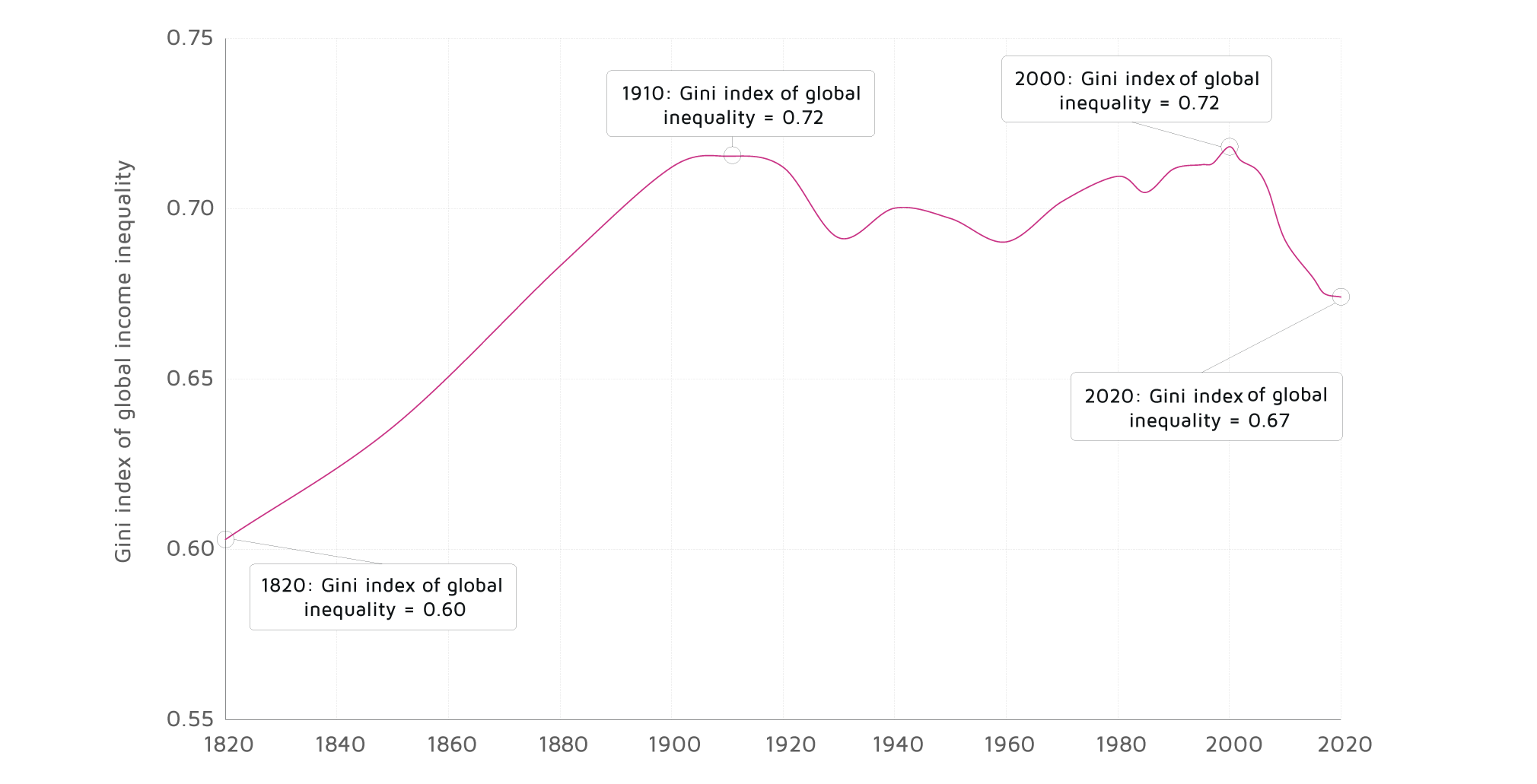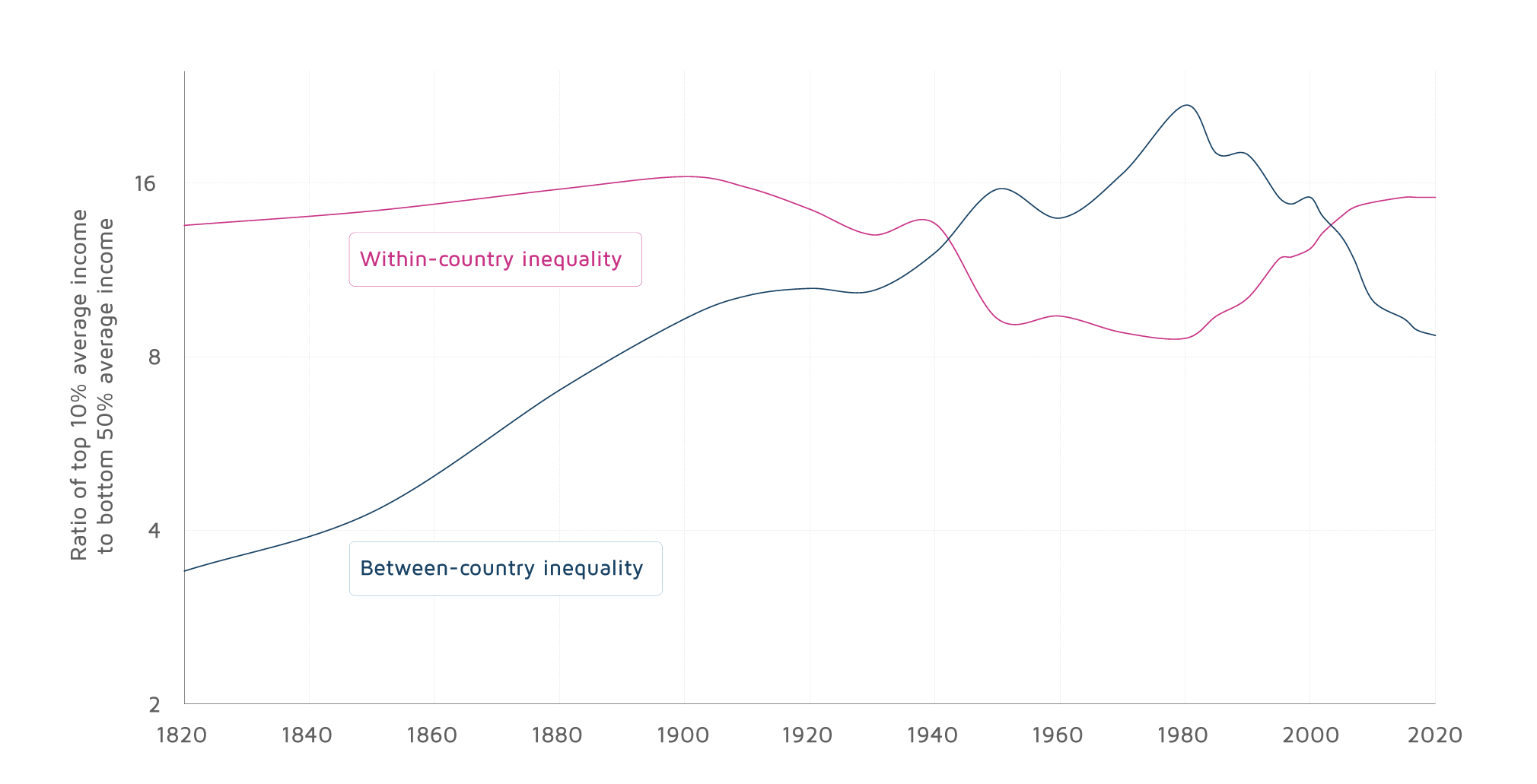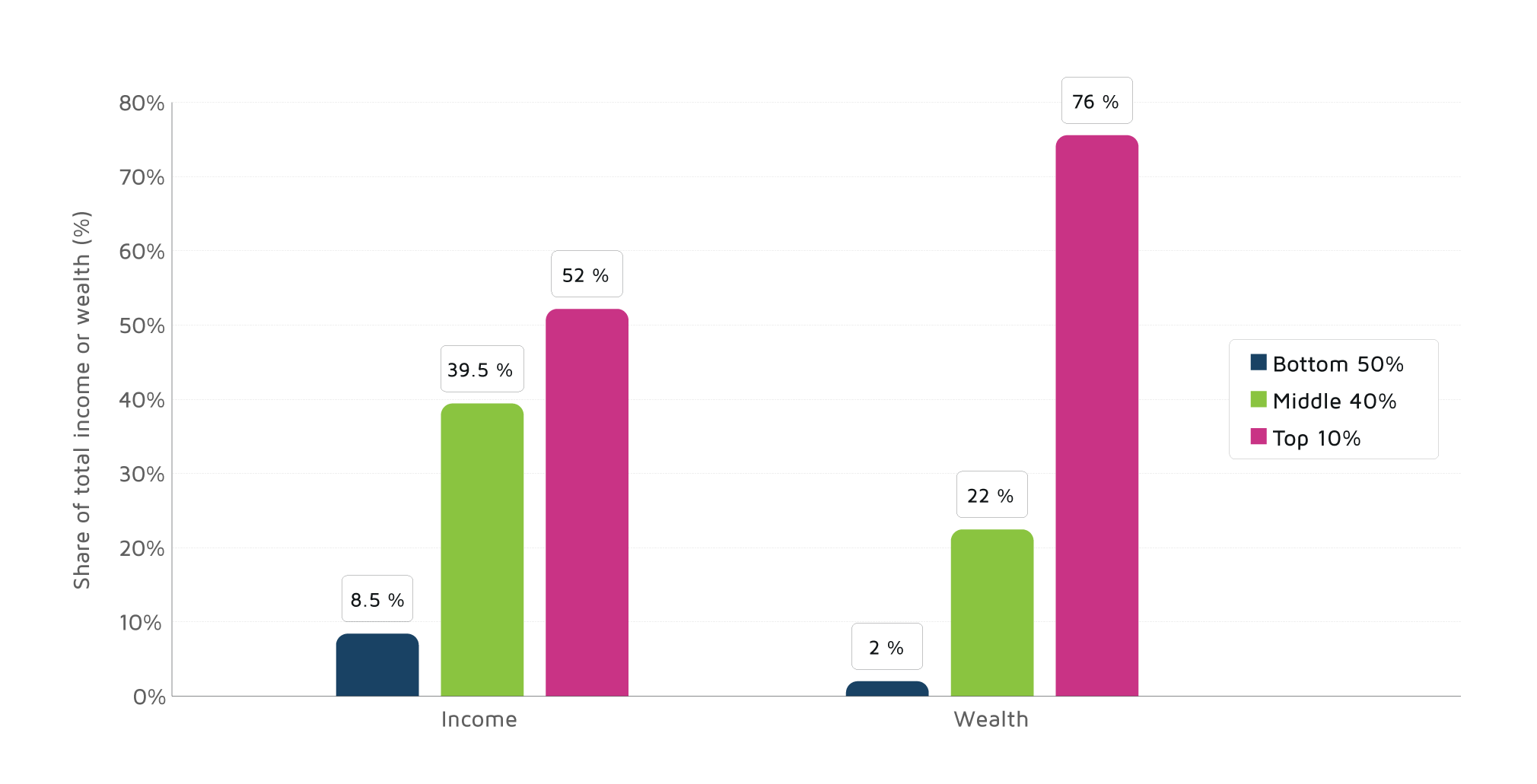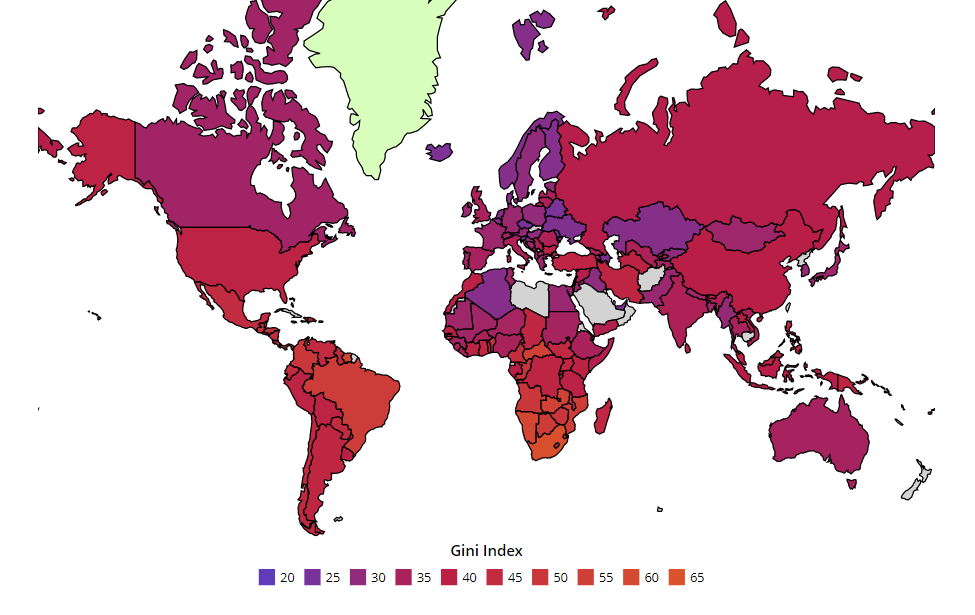Although global income inequality has decreased somewhat from its peak in 2000, a recent paper points out that in 2020 it still remained massive. It notes that according to the Gini Coefficient, in 2000 global income inequality stood at 0.72 and had decreased to 0.67 in 2020 which is comparable to the 0.60 Gini coefficient recorded in 1820. Moreover, while global income inequality has been contracting slightly, global wealth inequality witnessed a sharp increase during the pandemic.
Gini Coefficient
Developed by the Italian statistician and sociologist Corrado Gini in 1912, the Gini coefficient defines the existing inequalities in society by comparing the aggregate proportions of the population against the aggregate proportions of the income received by them. In other words, the coefficient compares the distribution of the income of a society with the distribution of the income of an imaginary society where everyone has exactly the same amount of income. Therefore, the Gini Coefficient varies from 0 to 1, with 0 meaning perfect equality while 1 – represents absolute inequality.
Inequality in terms of income continues to split the world
Analyses based on data since 1820 reveal global income inequalities have always been massive thus indicating the existence of a vastly hierarchical world economic system. Renowned economists, Lucas Chancel and Thomas Piketty, conclude that while global income inequality grew from 1820 to 1910 in connection with the rise of colonial empires and Western dominance, it then stabilized but remained high from 1910 to 2020.
The global Gini coefficient reached 0.72 in 1910 compared to 0.60 in 1820. Since 1910, while dropping slightly in the interim, the coefficient again reached 0.72 in 2000. In 2020, the coefficient was 0.67 leading to the conclusion that global income inequality has twice reached a record level, peaking in 1910 and in 2000.
Fig.1. Global income inequality: Gini index, 1820-2020

Within-country and between-country inequality
The global income inequality consists of two components which are within-country inequality and between-country inequality. While the first component measures the level of inequality within the society of a particular country, between-country inequality measures the level of inequality by comparing different countries.
Assessing the two components separately, within-country inequality decreased from 1910 to 1980 and increased significantly from 1980 to 2020 while between-country inequality continued to rise until 1980 and has since experienced a decline. The ratio T10/B50 relating the average incomes of the top 10% and the bottom 50%, based on the assumption that everyone in a country receives the same income, measures between-country inequality. Data shows that the T10/B50 ratio grew until 1980 and has been dropping slightly since then. The within-country level, measured by the T10/B50 ratio which is based on the assumption that all countries receive the same income on average, grew until 1910, dropped between 1910 and 1980, and has grown again since then.
Fig.2. Global income inequality: Between-country vs Within-country inequality (ratio T10/B50), 1820-2020

Wealth inequality amid the pandemic
In 2020, billionaires all around the world experienced a sharp increase in wealth while 100 million people saw their living standards fall below the poverty line. Currently, the top 10% richest individuals hold 52% of global income. Lucas Chancel, commenting on rising wealth inequality noted:
“After more than 18 months of COVID-19, the world is even more polarized. While the wealth of billionaires rose by more than €3.6tn (£3tn), 100 million more people joined the ranks of extreme poverty.”
Fig.3. Global income and wealth inequality, 2021

In 2021, the top five countries with the highest wealth inequality as measured by the Gini index were South Africa with 63.0% Namibia with 59.1%, Suriname with 57.9%, Zambia with 57.1%, and Sao Tome and Principe with 56.3%.
The top five countries with the lowest rate of Gini index in 2021 were Slovenia with 24.6%, the Czech Republic with 25.0%, Slovakia with 25.0%, Belarus with 25.3%, and Moldova with 25.7%.
Fig.4. Wealth Inequality by Country 2021


